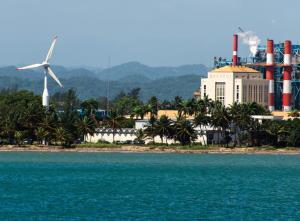Manufacturing Sector Strong But Challenged
Tomás Torres currently serves as Project Director in the Aireko Foundation and as General Coordinator of the Institute of Competitiveness and Economic Sustainability of Puerto Rico (ICSE-PR). Torres is a licensed engineer with over twenty-five years of experience. He is a former member of the Puerto Rico Planning Board. He chairs the Energy Committee at the Puerto Rico Manufacturers Association.
Puerto Rico has very high electricity costs when compared with the east-southeast region of the U.S. And the costs are high when compared with similar economies in the Caribbean, Central America and abroad. In Puerto Rico, the portion of the electricity tariff to cover the debt service equals the sector-specific tariffs of some states in the U.S. The Puerto Rico Electric Power Authority (PREPA) is currently unable to fulfill its payment obligations.

PREPA is a vertically integrated monopoly. It lacks private investment and depends mostly on an oil-fired generation fleet. Most of its units date from 1959 to 1975. It has poor penetration in terms of renewable and distributed energy.
Puerto Rico’s economy is not negligible. It has a strong manufacturing sector that contributes nearly half the territory’s gross domestic product of over one hundred billion dollars. But high prices for energy are having a direct, negative effect on the economy.
High prices and inefficient service do not allow a much-needed recuperation from nine years of economic contraction. High prices and a contracting economy inevitably produced an energy demand decrease, worsening the crisis at the Puerto Rico Electric Power Authority. This crisis has resulted in unreliable electric service.

